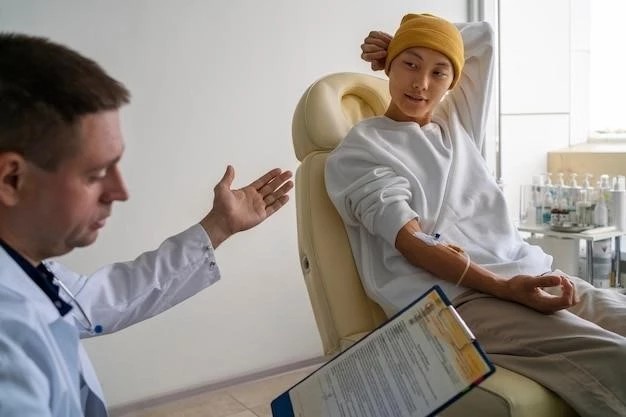Article Plan⁚ Disease ⎼ Spastic Paraparesis Deafness

Introduction to Spastic Paraparesis Deafness
Spastic Paraparesis Deafness is a complex condition characterized by a combination of symptoms affecting motor function and hearing․ Individuals with this condition may experience muscle overactivity, spasticity, profound sensorineural deafness, brisk tendon reflexes, and bilateral ankle clonus․ These symptoms can impact daily activities, mobility, and overall quality of life․
Diagnosis of Spastic Paraparesis Deafness involves thorough neurological examinations to assess motor function, hearing loss, and reflexes․ Genetic testing may also be necessary to identify specific mutations associated with the condition․ Early diagnosis is crucial in managing the symptoms and implementing appropriate treatment strategies․
Managing Spastic Paraparesis Deafness involves a multidisciplinary approach including medical interventions, physiotherapy, assistive devices, and support services․ Treatment aims to alleviate spasticity, improve mobility, and address hearing impairment․ It is essential for individuals with this condition to work closely with healthcare professionals to develop a personalized care plan․
Living with Spastic Paraparesis Deafness can present challenges, but with the right support and resources, individuals can maintain a fulfilling life․ Adaptive technologies, communication strategies, and accessible environments can enhance daily life experiences․ Support groups and community resources can also provide emotional support and practical assistance for both individuals and their caregivers․
Symptoms of Spastic Paraparesis Deafness
Spastic Paraparesis Deafness manifests in a combination of symptoms affecting motor function and hearing․ Common symptoms include muscle overactivity, spasticity, profound sensorineural deafness, brisk tendon reflexes, and bilateral ankle clonus․ Individuals may experience pain, difficulty with mobility, and challenges in performing daily tasks․
Other symptoms linked to Spastic Paraparesis Deafness can include limb weakness, asymmetric muscle weakness, gait difficulties, tremors, and muscle spasms․ Some individuals may present with additional conditions like optic atrophy, retinopathy, or neurologic manifestations․ Hearing loss and motor impairments often progress over time, impacting quality of life․
Diagnosis of Spastic Paraparesis Deafness involves a comprehensive evaluation of neurological symptoms, genetic testing to identify associated mutations, and differential diagnoses to rule out other neuro-metabolic disorders․ Early recognition of symptoms and prompt medical attention are vital in managing the condition effectively․
If you or a loved one experience symptoms such as progressive limb weakness, spasticity, hearing difficulties, or muscle spasms, consult a healthcare professional for a thorough assessment․ Understanding the symptoms of Spastic Paraparesis Deafness and seeking timely intervention can lead to improved outcomes and better quality of life․
Causes of Spastic Paraparesis Deafness
Spastic Paraparesis Deafness can have various causes, including nerve damage resulting from conditions like stroke, multiple sclerosis (MS), cerebral palsy, and genetic mutations․ Mutations in genes like SOX10 can lead to a phenotype of complicated Hereditary Spastic Paraparesis (HSP) with hypomyelinating neuropathy and deafness․
The differential diagnosis for progressive spastic paraparesis includes rare neuro-metabolic diseases such as cerebro-tendinous xanthomatosis, adrenomyeloneuropathy, and hypovitaminosis․ Additionally, conditions like hepatic myelopathy, trauma, and cord compression can contribute to the development of spastic paraparesis․
Furthermore, hereditary spastic paraparesis may be associated with optic atrophy, retinopathy, extrapyramidal disease, dementia, ataxia, mental retardation, and more․ In some cases, noise-induced hearing damage can also be a factor, leading to deafness in individuals with Spastic Paraparesis Deafness;
If you are experiencing symptoms of spastic paraparesis along with hearing impairment, consult a healthcare professional for a thorough evaluation to determine the underlying cause․ Understanding the potential causes of Spastic Paraparesis Deafness can guide appropriate treatment and management strategies․
Diagnosis of Spastic Paraparesis Deafness
Diagnosing Spastic Paraparesis Deafness often involves a comprehensive assessment of symptoms by healthcare professionals․ A neurological examination may reveal characteristics such as profound sensorineural deafness, spastic paraparesis, brisk tendon reflexes, and bilateral ankle clonus․ These findings, along with a detailed medical history, help in identifying the condition․
When considering potential causes of Spastic Paraparesis Deafness, healthcare providers may evaluate for nerve damage resulting from various conditions like stroke, multiple sclerosis, cerebral palsy, and genetic mutations such as SOX10 mutations linked to a phenotype of complicated Hereditary Spastic Paraparesis with hypomyelinating neuropathy and deafness․
In the diagnostic process, clinicians also consider a broad range of differential diagnoses for progressive spastic paraparesis, including rare neuro-metabolic diseases like cerebro-tendinous xanthomatosis, adrenomyeloneuropathy, and hypovitaminosis․ Understanding the underlying etiology is crucial for developing an appropriate treatment plan tailored to the individual’s specific needs․
If you or someone you know is experiencing symptoms like muscle overactivity, spasticity, hearing impairment, or other concerning signs, seeking a prompt evaluation from a healthcare provider is essential․ Early diagnosis of Spastic Paraparesis Deafness allows for timely interventions and access to specialized care aimed at managing the condition effectively․
Treatment Options for Spastic Paraparesis Deafness
Treatment for Spastic Paraparesis Deafness focuses on managing symptoms to improve quality of life․ Individuals may benefit from a multidisciplinary approach involving medical interventions, physiotherapy, assistive devices, and supportive therapies․ Medications like muscle relaxants can help reduce spasticity and improve mobility․
Physiotherapy plays a crucial role in rehabilitation by targeting muscle strengthening, gait training, and balance exercises․ Assistive devices such as braces, orthoses, and mobility aids can support individuals in daily activities and enhance independence․ Speech therapy may aid in communication for those with hearing impairments․
Individuals with Spastic Paraparesis Deafness may also explore alternative therapies like acupuncture, massage, or hydrotherapy to manage symptoms․ It is important to consult healthcare professionals before starting any alternative treatments to ensure safety and effectiveness․
For those with associated conditions like multiple sclerosis, treatment may involve disease-modifying medications, symptom management, and lifestyle adjustments․ Monitoring hearing health and accessing hearing aids or cochlear implants can help improve communication and quality of life for individuals with deafness․
Collaborating with a healthcare team that includes neurologists, physiatrists, audiologists, and other specialists can help individuals with Spastic Paraparesis Deafness tailor a comprehensive treatment plan to address their unique needs and optimize outcomes․
Complications Associated with Spastic Paraparesis Deafness
Individuals with Spastic Paraparesis Deafness may experience various complications that impact their daily lives․ Complications may arise from the combination of motor function impairments and sensorineural deafness, leading to challenges in mobility, communication, and overall well-being․
Complications associated with Spastic Paraparesis Deafness can include muscle overactivity, spasticity-related pain, difficulty in performing daily tasks, and limitations in mobility․ The progressive nature of the condition can result in worsening symptoms over time, affecting independence and quality of life․
Furthermore, individuals with Spastic Paraparesis Deafness may face challenges in social interactions, employment opportunities, and accessing healthcare services․ Communication barriers due to hearing loss can contribute to feelings of isolation and frustration․
Monitoring for potential complications and addressing them proactively is essential in managing Spastic Paraparesis Deafness effectively․ Regular follow-ups with healthcare providers, adherence to treatment plans, and exploring assistive technologies can help mitigate complications and improve overall outcomes․
If you or a loved one experience complications related to Spastic Paraparesis Deafness, it is recommended to consult with healthcare professionals for guidance on managing symptoms, accessing support services, and enhancing quality of life despite the challenges posed by the condition․
Prognosis for Individuals with Spastic Paraparesis Deafness
The prognosis for individuals with Spastic Paraparesis Deafness can vary based on the underlying cause, disease progression, and individual characteristics․ Early diagnosis and intervention play a significant role in managing symptoms and improving quality of life․
For cases where Spastic Paraparesis Deafness is associated with conditions like stroke, multiple sclerosis, or cerebral palsy, the prognosis may depend on the management of these underlying conditions through medication, rehabilitation, and lifestyle modifications․
Individuals with genetic mutations linked to Spastic Paraparesis Deafness, such as SOX10 mutations, may experience a range of outcomes depending on the specific genetic variant and associated symptoms․ Genetic counseling and personalized treatment plans can help individuals navigate their condition effectively․
Complications associated with Spastic Paraparesis Deafness, such as muscle overactivity, pain, mobility limitations, and communication challenges, can impact long-term prognosis․ However, with appropriate medical care, therapy, and support, individuals can achieve improved function and quality of life․
Regular follow-ups with healthcare providers, adherence to treatment regimens, and utilizing assistive devices can positively influence the prognosis for individuals with Spastic Paraparesis Deafness․ Collaborating with a multidisciplinary healthcare team can provide comprehensive care tailored to individual needs and optimize outcomes․
Research and Studies on Spastic Paraparesis Deafness
Recent research has focused on understanding the underlying mechanisms and genetic factors contributing to Spastic Paraparesis Deafness․ Studies have identified mutations in genes like SOX10 associated with complicated Hereditary Spastic Paraparesis (HSP) with hypomyelinating neuropathy and deafness․
Furthermore, investigations into the differential diagnosis of progressive spastic paraparesis have explored rare neuro-metabolic diseases like cerebro-tendinous xanthomatosis and adrenomyeloneuropathy․ These studies aim to improve diagnostic accuracy and guide personalized treatment approaches․
Research on the symptomatic phenotypes of Spastic Paraparesis Deafness has revealed variations in presentation, including limb weakness, asymmetric muscle weakness, and specific genetic markers․ Understanding these phenotypic variations is crucial for tailored treatment strategies․
Additionally, studies focusing on the impact of muscle spasms and spasticity in conditions like multiple sclerosis have prompted advancements in treatment options such as medication and physiotherapy․ These findings inform clinical practices to enhance symptom management and improve quality of life․
Exploration of rare neurologic disorders characterized by spastic paraparesis and associated complications, including deafness, lens opacities, and nephropathy, sheds light on the complex nature of Spastic Paraparesis Deafness․ Ongoing research strives to uncover novel therapeutic targets and interventions for improved patient outcomes․
Hereditary Aspect of Spastic Paraparesis Deafness
The hereditary aspect of Spastic Paraparesis Deafness is linked to genetic mutations that play a key role in the development of this complex condition․ Mutations in genes like SOX10 have been associated with a phenotype of complicated Hereditary Spastic Paraparesis (HSP) characterized by hypomyelinating neuropathy and deafness․
Understanding the hereditary component of Spastic Paraparesis Deafness is crucial in identifying familial patterns and providing genetic counseling for affected individuals and their families․ Genetic testing can help determine specific mutations that contribute to the condition, guiding treatment decisions and management strategies․
In some cases, hereditary spastic paraparesis may present with additional manifestations such as optic atrophy, retinopathy, extrapyramidal disease, dementia, ataxia, mental retardation, and deafness․ These diverse clinical features underscore the genetic complexity and variability of Spastic Paraparesis Deafness․
Individuals with a family history of genetic conditions associated with spasticity, muscle weakness, and hearing impairment should consider genetic counseling and testing to assess their risk factors․ Early detection of hereditary aspects of Spastic Paraparesis Deafness enables proactive measures to manage symptoms and improve outcomes․

Impact on Daily Life and Quality of Life
Spastic Paraparesis Deafness can significantly impact daily life and quality of life due to the combination of motor function impairments and sensorineural deafness․ Individuals may face challenges such as muscle overactivity, spasticity-related pain, and mobility limitations, affecting their ability to perform daily tasks․
The condition can lead to difficulties in walking, dressing, and engaging in social activities, impacting independence and overall well-being․ Communication barriers due to hearing loss can contribute to feelings of isolation and frustration, affecting interactions with others and participation in community life․
Furthermore, the progressive nature of Spastic Paraparesis Deafness can result in worsening symptoms over time, necessitating ongoing management and support․ Coping with the physical and emotional aspects of the condition requires resilience and access to comprehensive care services․
To enhance daily life and quality of life for individuals with Spastic Paraparesis Deafness, it is essential to address symptoms proactively through medical interventions, therapy, assistive devices, and emotional support․ Creating an inclusive and accessible environment can improve accessibility and participation in various activities․
Seeking guidance from healthcare professionals, joining support groups, and exploring adaptive technologies can empower individuals with Spastic Paraparesis Deafness to overcome challenges and lead fulfilling lives․ Emphasizing self-care, maintaining social connections, and staying informed about available resources are key components in managing the impact of the condition on daily life․
Preventive Measures for Spastic Paraparesis Deafness
While Spastic Paraparesis Deafness is often linked to genetic mutations and neuro-metabolic disorders, there are certain preventive measures individuals can consider to potentially reduce the risk or manage symptoms⁚
- Regular Exercise⁚ Engaging in physical activity that promotes muscle strength and flexibility can help maintain overall mobility and reduce the impact of spasticity․
- Healthy Lifestyle Choices⁚ Adopting a balanced diet, staying hydrated, and avoiding harmful habits like smoking can contribute to overall well-being and potentially support nerve health․
- Early Intervention⁚ Seeking medical attention at the first sign of motor function impairments or hearing issues can lead to early diagnosis and timely management to prevent complications․
- Genetic Counseling⁚ For individuals with a family history of hereditary conditions associated with spasticity and deafness, genetic counseling can provide insights into risk factors and inform decisions about testing․
- Occupational Adjustments⁚ Making modifications in the workplace or at home to accommodate mobility challenges and hearing impairment can help create a supportive environment for daily activities․
While not all cases of Spastic Paraparesis Deafness can be prevented, maintaining a healthy lifestyle, staying proactive about health screenings, and addressing symptoms promptly can contribute to overall well-being and potentially improve outcomes for individuals at risk of developing or already experiencing the condition․
Support Resources for Individuals with Spastic Paraparesis Deafness
For individuals living with Spastic Paraparesis Deafness, accessing support resources can enhance overall well-being and quality of life․ Here are some avenues for support and assistance⁚
- Healthcare Professionals⁚ Neurologists, physiatrists, otolaryngologists, and audiologists can provide specialized care, treatment options, and guidance to manage symptoms effectively․
- Support Groups⁚ Joining support groups or online communities for individuals with similar conditions can offer emotional support, shared experiences, and valuable information on coping strategies․
- Rehabilitation Services⁚ Physiotherapists, occupational therapists, and speech therapists can help individuals develop tailored rehabilitation programs to improve mobility, communication, and daily living skills․
- Assistive Devices⁚ Utilizing assistive devices such as hearing aids, cochlear implants, orthoses, and mobility aids can enhance independence and facilitate engagement in various activities․
- Counseling Services⁚ Mental health professionals can provide psychological support, coping mechanisms, and strategies to address the emotional impact of living with a chronic condition like Spastic Paraparesis Deafness․
- Educational Resources⁚ Accessing educational materials, workshops, and webinars on Spastic Paraparesis Deafness can help individuals and their caregivers stay informed about the condition and available resources․
By leveraging these support resources and building a network of healthcare providers, peers, and assistive services, individuals with Spastic Paraparesis Deafness can navigate their journey with greater resilience, empowerment, and improved overall quality of life․
Conclusion and Final Remarks on Managing Spastic Paraparesis Deafness
In conclusion, managing Spastic Paraparesis Deafness requires a comprehensive approach that addresses both motor function impairments and hearing difficulties․ By leveraging available resources, support systems, and proactive measures, individuals can enhance their quality of life and well-being․
It is crucial for individuals with Spastic Paraparesis Deafness to work closely with healthcare professionals to develop personalized care plans that incorporate medical interventions, rehabilitation therapies, and assistive technologies․ Early diagnosis, timely intervention, and ongoing monitoring are essential in effectively managing the condition․
Additionally, staying informed about recent research, genetic findings, and treatment advancements can empower individuals to make informed decisions about their health․ Engaging with support groups, seeking counseling services, and exploring assistive devices play a vital role in promoting independence and resilience in the face of challenges․
By adopting a proactive mindset, maintaining a healthy lifestyle, and accessing the appropriate support resources, individuals with Spastic Paraparesis Deafness can navigate their journey with confidence and optimize their overall functioning and quality of life․ Remember, you are not alone in this journey, and there are resources available to support you every step of the way․
